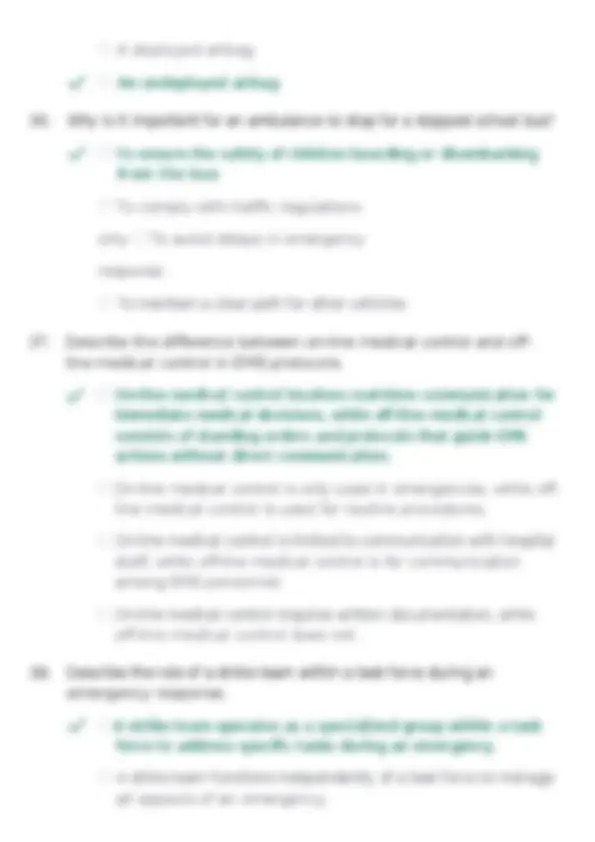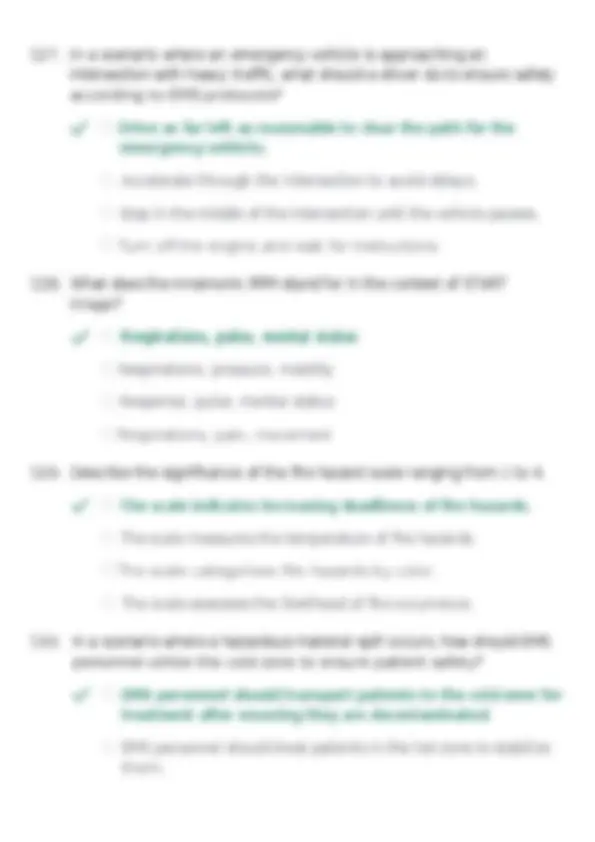













































Study with the several resources on Docsity

Earn points by helping other students or get them with a premium plan


Prepare for your exams
Study with the several resources on Docsity

Earn points to download
Earn points by helping other students or get them with a premium plan
Community
Ask the community for help and clear up your study doubts
Discover the best universities in your country according to Docsity users
Free resources
Download our free guides on studying techniques, anxiety management strategies, and thesis advice from Docsity tutors
A comprehensive set of 31 multiple-choice questions and answers covering various aspects of nremt ems protocols and safety. It covers topics such as communication systems, mass casualty incidents, vehicle hazards, patient assessment, and ethical considerations in emergency medical services. The questions are designed to test knowledge and understanding of essential ems procedures and safety practices.
Typology: Exams
1 / 51

This page cannot be seen from the preview
Don't miss anything!












































It is not necessary if the patient has a pulse. Repositioning is only needed if the patient is unresponsive. It prevents the patient from going into cardiac arrest.
Negative Red Neutral Positive
Environmental hazards have no significant impact on EMS operations. Environmental hazards only affect patient outcomes, not EMS operations. Environmental hazards are only relevant in urban settings.
Contact the patient's family for consent.
A deployed airbag An undeployed airbag
A strike team is responsible for triaging patients only. A strike team focuses solely on communication methods during emergencies.
Blue
It allows responders to disclose patient information without consequences. It has no impact on the EMS protocols or patient care.